 17 Brutal Torture Techniques From History That Will Make Your Blood Run Cold
17 Brutal Torture Techniques From History That Will Make Your Blood Run Cold
Torture has been around for thousands of years, and it has been used as punishment, methods of execution, and as a means of obtaining information. It feels weird to use the word “creative” for such practises, but some torture methods were indeed creative as well as gruesome. Here are some painful, and brutal torture techniques from history.
1. Heretic's fork

The device was placed between the breast bone and throat just under the chin and secured with a leather strap around the neck, while the victim was hung in an upright position from the ceiling or otherwise suspended in a way so that they could not lie down. Usually the Heretic's fork was given to people who spoke the lord's name in vain, blasphemers, or liars. This way, the punishment made it nearly impossible for them to talk. Also, a person wearing it couldn't fall asleep. The moment their head dropped with fatigue, the prongs pierced their throat or chest, causing great pain. This very simple instrument created long periods of sleep deprivation. People were awake for days, which made confessions more likely.
Traditionally, the fork was engraved with the Latin word abiuro (meaning 'I recant'), and was used by the various Inquisitions.
2. Scold's bridle
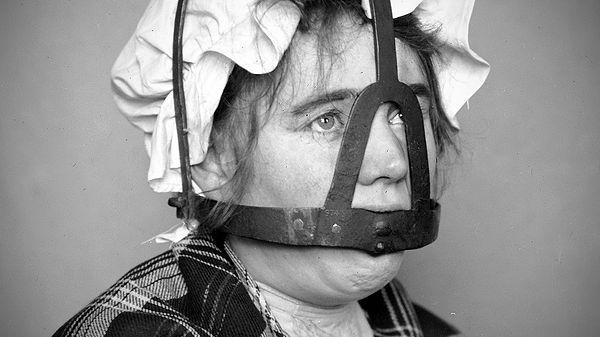
The device was an iron muzzle in an iron framework that enclosed the head. A bridle-bit (or curb-plate), about 2 inches long and 1 inch broad, projected into the mouth and pressed down on top of the tongue.
Branking (in Scotland and the North of England) was designed as a mirror punishment for shrews or scolds; women of the lower classes whose speech was deemed 'riotous' or 'troublesome'; — often women suspected of witchcraft — by preventing such 'gossips or scolds' from speaking. This also gives it its other name 'The Gossip's Bridle'
3. Thumbscrew
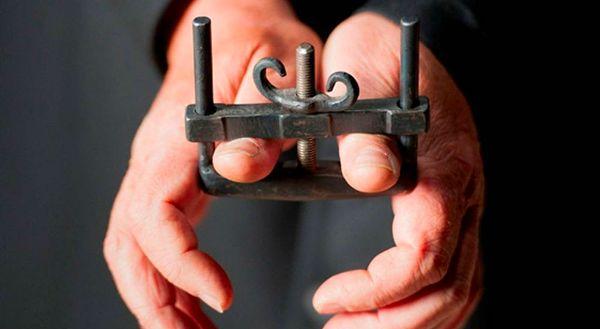
The thumbscrew was first used in medieval Europe. It is a simple vice, sometimes with protruding studs on the interior surfaces. The victim's thumbs or fingers were placed in the vice and slowly crushed. The thumbscrew was also applied to crush prisoners' big toes. The crushing bars were sometimes lined with sharp metal points to puncture the thumbs and inflict greater pain in the nail beds. Larger, heavier devices based on the same design principle were applied to crush feet and ears.
4. Crocodile Shears
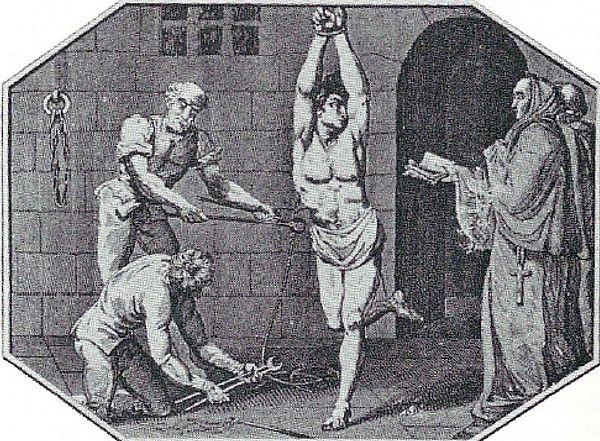
The crocodile shears were used in late medieval Europe and usually reserved for men who tried to assassinate the king. These shears were made of metal, based on the concept of pincers. The insides of their hemicylindrical blades were lined with a great amount of spikes.
After being heated to an excruciatingly hot temperature, the crocodile shears were applied to the victim’s erect penis, which was then torn from his body, or, if he was lucky, the device could just lead to intense bleeding from the severed arteries.
5. Breast ripper
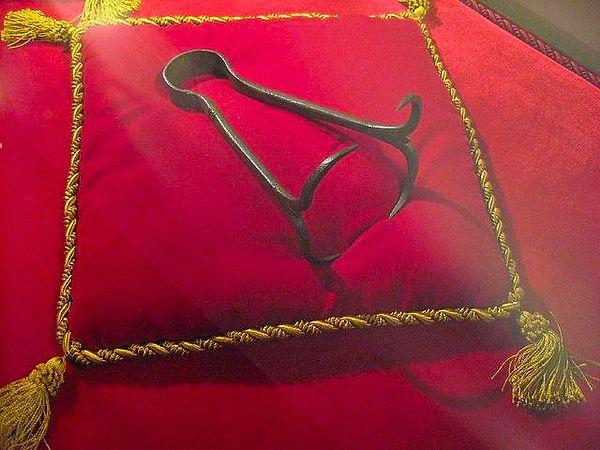
The Breast Ripper was mainly used on women who were accused of adultery or self-performed abortion.The instrument was designed to rip the breasts from a woman and was made from iron, which was usually heated. The tool was used popularly in Bavaria in 1599, and in parts of Germany and France until the nineteenth century.
6. Pear of anguish
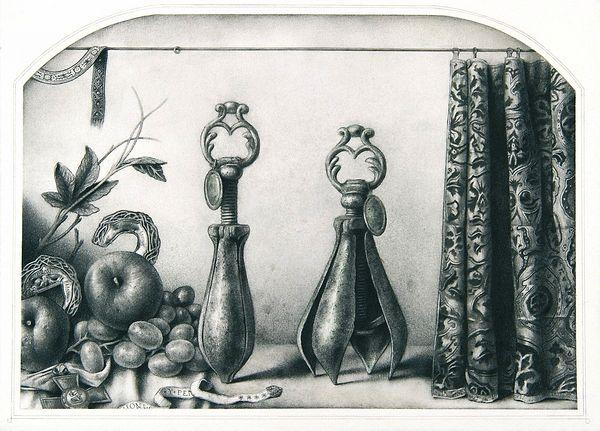
The Pear of Anguish was used during the Middle Ages as a way to torture women who conducted a miscarriage, liars, blasphemers and homosexuals. A pear-shaped instrument was inserted into one of the victim's orifices: the vagina for women, the anus for homosexuals and the mouth for liars and blasphemers.
The instrument consisted of four leaves that slowly separated from each other as the torturer turned the screw at the top. It was the torturer's decision to simply tear the skin or expand the 'pear' to its maximum and mutilate the victim.
7. Knee splitter
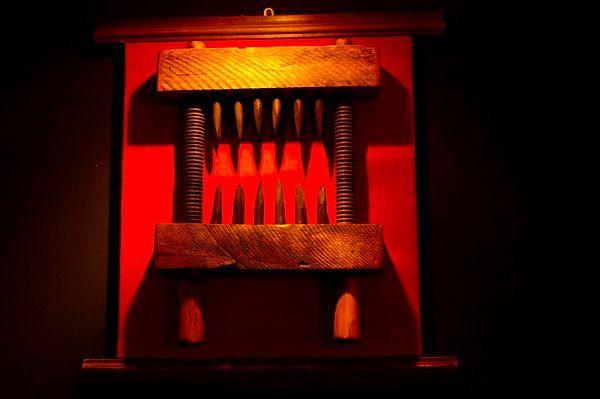
It was created from two spiked wood blocks, placed in front of, and behind the knee. The blocks were connected with two large screws. When turned, the blocks would close towards each other, destroying the knee underneath them. This method was used to render the knees useless. The number of spikes on the blocks would range from three to twenty, depending on the captive.
8. Metal coffin
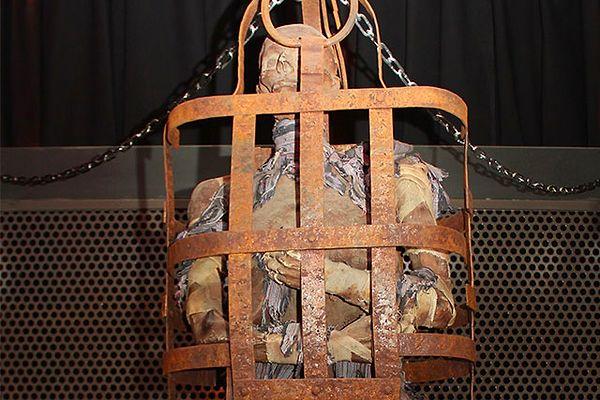
Coffin torture involved restraining a person in a cage coffin, and leaving them to hang vertically in the open. While this torture rarely ended in death, victims suffered mental distress as they were often abused, verbally and physically by the locals while confined.
9. Guillotine
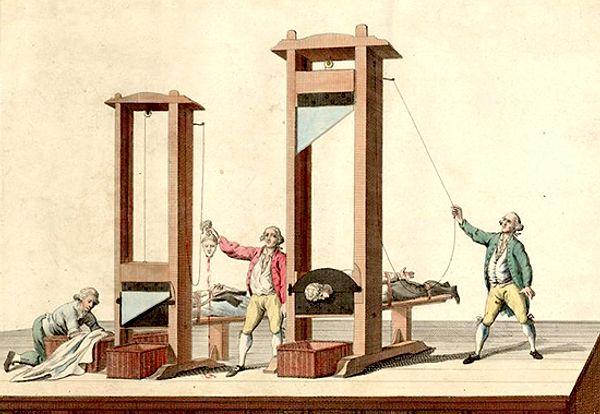
The victim’s head was placed in a stockade at the end of a wooden bed, and a sharp blade would be dropped on the victim’s neck, decapitating them. It’s rumored that the death was so quick, the victim’s head was still alive for a few seconds after being severed.
10. Spanish Donkey
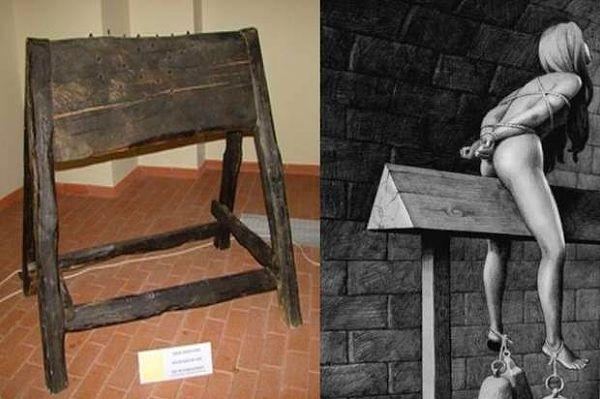
During the Spanish inquisition, the Spanish Donkey was a tool used to get confessions from “heretics.” The large wedge shaped “horse” or “donkey” would have a victim sat upon the point of the wedge with their legs astride, and weighed down by stones or weights. Intense pain ensued, often crippling the victim for life.
11. The Judas Cradle
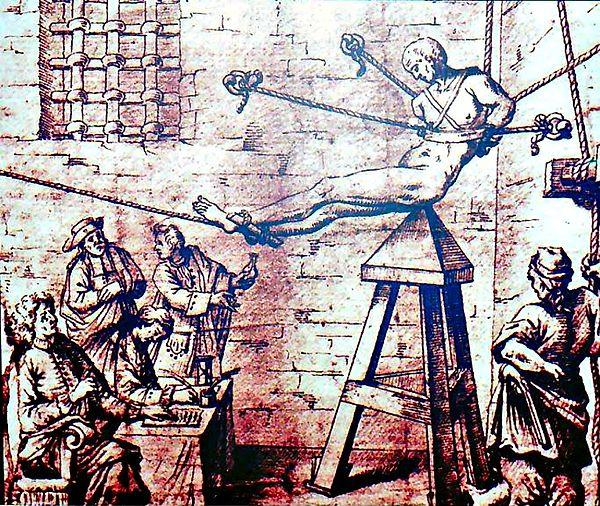
The Judas Cradle was an Italian torture device resembling a pyramid shaped seat. Torture victims would be seated on it, with the point inserted into the anus or vagina, slowly stretching out the orifice until the victim was completely impaled or infection set in and killed the victim.
12. Poena Cullei
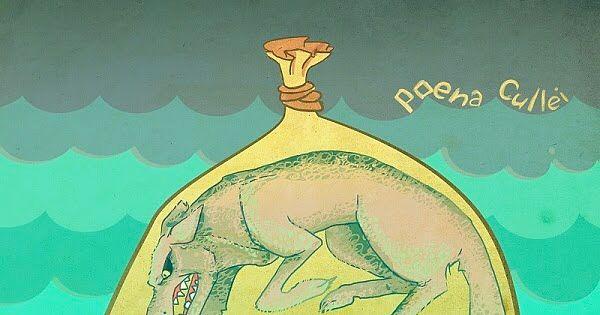
The Romans devised of Poena Cullei to deal with those committing parricide (killing their parents). The criminal was sewn into a leather sack with several wild animals, often dogs, cats, snakes, and even monkeys, then thrown into a body of water. Eventually the method fell out of practice, but was revived several times throughout history, each time with a specific list of animals to be thrown in the sack.
13. Ling Chi

Ling Chi or death by a thousand cuts was used as a form of execution in ancient China. The executioner uses a knife to remove small pieces of the victim’s body, eventually resulting in death. Executioners would test their skills by trying to prolong the torture for as long as possible.
14. The Iron Chair

The Iron Chair was a chair adorned with lots and lots of small spikes. Since no organs were punctured, and all the wounds are sealed, death didn’t occur until after the person was removed from the chair.
15. Iron Maiden
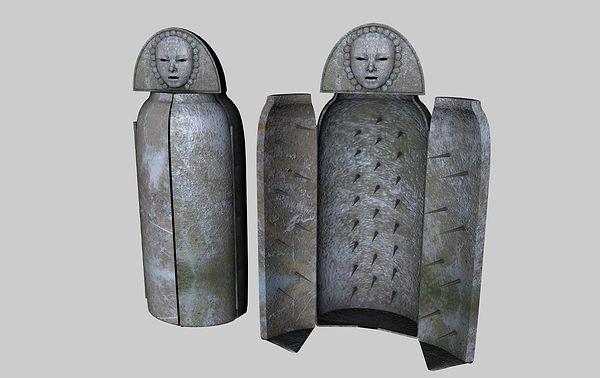
The Iron Maiden is an upright metal coffin, with many sharp spikes inside. Once victims were placed inside and the Iron Maiden closed, the victim would either be impaled repeatedly or unable to move without getting pierced by the spikes. This torture often ended in death, but some were lucky enough to have survived.
16. Impalement
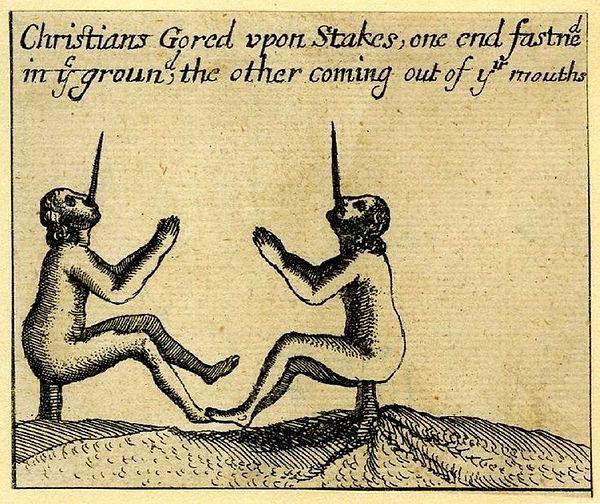
Impalement has been a staple torture method through history, and a favorite of Vlad The Impaler, the prince who inspired the original Dracula story. A large stick was sharpened at one end, and a person impaled upon it. Then the stick was planted in the ground, and the person would slowly and painfully slide down to their death. Sometimes the victim was impaled all the way through from the start.
17. Chinese water torture

Chinese water torture is less about damage to the body and more about damage to the mind. The victim is firmly tied down, and a single drop of water is repeatedly dropped on the victim’s head, slowly driving the victim insane. While the technique is described several times through history, there are no reported cases of this ever taking place.
Keşfet ile ziyaret ettiğin tüm kategorileri tek akışta gör!

Send Comment